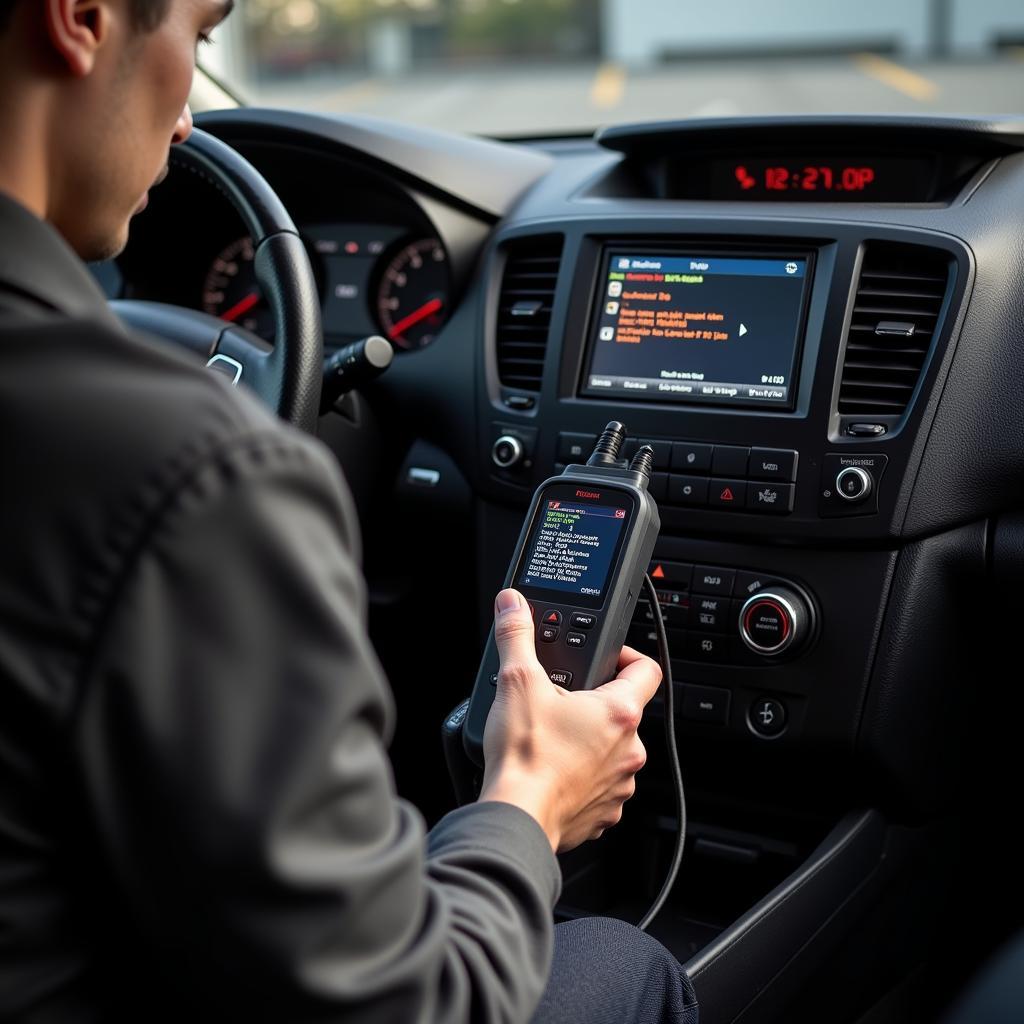A clogged Diesel Particulate Filter (DPF) is a common issue for diesel car owners, often leading to reduced performance, warning lights, and costly repairs. Understanding Cars Dpf Problems is crucial for both owners and mechanics. This guide will delve into the causes, symptoms, solutions, and preventative measures for DPF issues.
Understanding the DPF and Its Function
The DPF is a critical component of modern diesel vehicles, designed to trap soot and other harmful particulate matter from the exhaust gases, reducing emissions and improving air quality. It works by forcing exhaust gases through a honeycomb-like structure coated with precious metals, which act as catalysts to burn off the trapped soot during a process called regeneration.
How DPF Regeneration Works
There are two main types of DPF regeneration: passive and active. Passive regeneration occurs naturally during highway driving at higher speeds and temperatures. Active regeneration, on the other hand, is initiated by the car’s engine control unit (ECU) when the DPF reaches a certain level of soot accumulation. This process injects fuel into the exhaust system to increase the temperature and burn off the soot. Understanding these processes is key to diagnosing cars DPF problems.
Common Cars DPF Problems and Their Symptoms
Several factors can contribute to cars DPF problems. Frequent short journeys, especially in urban areas, prevent the DPF from reaching the optimal temperature for passive regeneration. Faulty sensors, fuel injectors, or a malfunctioning ECU can also disrupt the regeneration process. Common symptoms include:
- DPF Warning Light: This is the most obvious sign of a DPF problem.
- Reduced Engine Performance: A clogged DPF restricts exhaust flow, leading to power loss and sluggish acceleration.
- Increased Fuel Consumption: The engine works harder to compensate for the restricted exhaust flow.
- Limp Mode: In severe cases, the car may enter limp mode to prevent further damage.
Are you experiencing any of these symptoms? You might have a DPF issue. car dealerships biggest problems are something to be aware of when seeking assistance.
Diagnosing and Fixing Cars DPF Problems
Diagnosing DPF problems requires specialized diagnostic tools to read fault codes and monitor DPF parameters. A qualified mechanic can perform a forced regeneration using a diagnostic scan tool, which can sometimes clear a partially blocked DPF. Other solutions include:
- DPF Cleaning: Professional DPF cleaning services can remove accumulated soot and ash.
- DPF Replacement: In some cases, a severely damaged or clogged DPF may need replacement. This can be costly, so regular maintenance is essential.
- Addressing Underlying Issues: Fixing any underlying issues, such as faulty sensors or injectors, is crucial to prevent recurring DPF problems.
“Regular DPF maintenance is often overlooked, leading to costly repairs down the line,” says John Smith, Senior Automotive Engineer at Advanced Auto Solutions. “A little preventative care can save you a lot of hassle and expense in the long run.”
Preventing Cars DPF Problems
Preventing DPF problems is often easier and cheaper than fixing them. Here are some key preventative measures:
- Regular Highway Driving: Periodically driving at higher speeds for extended periods allows for passive regeneration. If you live in a big city and primarily drive short distances, this is especially important for you. Consider problems with electric cars big cities as a possible alternative.
- Using the Correct Engine Oil: Use only low-ash engine oil specifically designed for diesel vehicles with DPFs.
- Avoid Short Journeys: Whenever possible, combine short trips into longer ones to allow the DPF to reach operating temperature. Think about there are biggger problems thatn the dent in your car and focus on the bigger picture of car maintenance.
- Regular Servicing: Follow the manufacturer’s recommended service intervals for DPF checks and maintenance. Be sure to note biggest problems with tesla cars as a reference when considering different brands.
- Fuel Quality: Use high-quality diesel fuel to minimize soot production.
“Choosing the right engine oil can significantly impact the lifespan of your DPF,” advises Jane Doe, Lead Mechanic at Diesel Tech Solutions. “Using incorrect oil can accelerate soot buildup and lead to premature DPF failure.” Driverless cars also face issues related to technology. Learn more about what are the biggest driverless car problems.
Conclusion
Cars DPF problems can be a significant headache for diesel car owners, but understanding the causes, symptoms, and preventative measures can help you avoid costly repairs and maintain optimal vehicle performance. Regular maintenance, proper driving habits, and the use of correct engine oil are key to preventing DPF issues. For further assistance or expert advice on cars DPF problems, please contact AutoTipPro at +1 (641) 206-8880 or visit our office at 500 N St Mary’s St, San Antonio, TX 78205, United States.





Leave a Reply